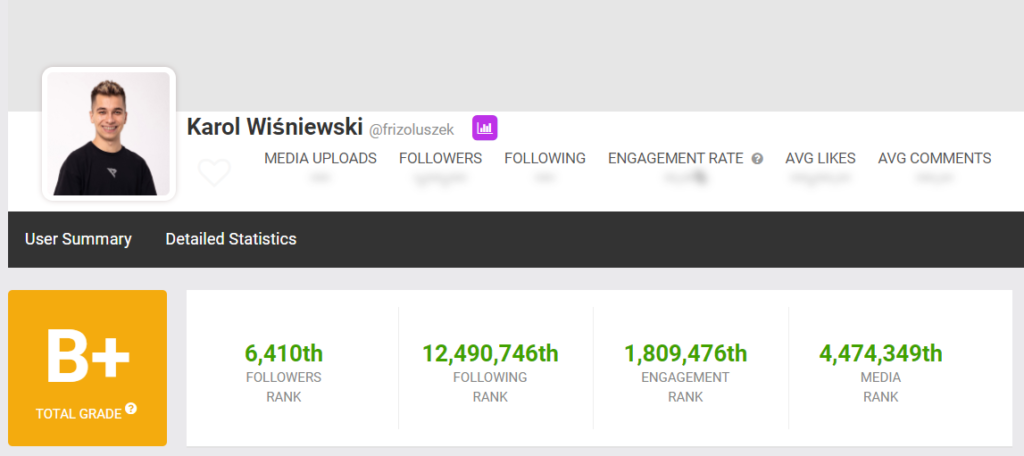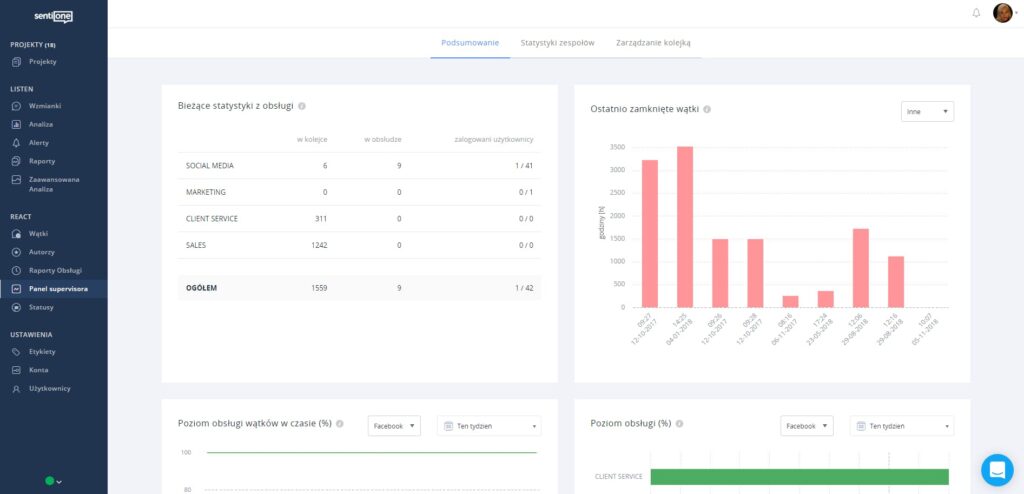Influencer. Contrary to appearances, their job is not only about adding photos in fashionable clothes and informing InstaStories about the content of their breakfast. It is a struggle to engage followers, respect competition and, of course, brand attention.
Yes, cooperation with influencers in Poland still remains one of the most effective marketing tactics. However, due to market saturation, finding the right influencer and assessing their potential effectiveness has become more and more difficult for marketers. And if the brand is just starting out on the Polish market, these steps seem insurmountable. How to deal with this?
Table of Contents:
- Authenticity analysis
- Qualitative analysis
- Analysis of previous collaborations
- Real image on the web
Suppose you already have an eye on a few Polish influencers to cooperate with. You have set the campaign goals, promotion platform, advertising rules, budget and potential ranges.
You browse profiles, negotiate… and nothing.
If you do not know where to start an analysis of Polish influencers; with what tools to use, and what the methods to evaluate them are, follow these four steps:
1. Authenticity analysis
Seemingly, light work and easy money each year attract new wanna-be influencers who dream of big contracts with expensive brands. And what is the easiest way to become an influencer without many years of work? Buying followers.
One of the most popular stores offers us a price from only PLN 20 to PLN 260 for “real” Instagram followers. The website boasts that over 18,000 people have already used its services. It doesn’t sound very appealing to someone who wants to start influencer marketing in Poland, does it?
How to check the authenticity of followers?
There are several ways, or rather tools. These include, for example, IQhashtags, Social Blade, Fake Check or Influtool. Each works similarly; analysing the reach of posts, engagement, community size or the percentage of real followers. This is where you’ll see any sudden spikes (which could be follower buying), sudden drops, and any unusual account movements (which could mean bots).

Source:https://socialblade.com/instagram/user/frizoluszek
What should worry you?
The above-mentioned drops or increases in followers, and the unusual demographics of followers, are red warning lights to be ignored at your peril. If an influencer operates on the Polish market, the vast majority of comments under their photos or videos should be in this language. Another thing to watch out for is disproportionate involvement with the size of the profile. It works both ways: both a small profile with a lot of likes and a large profile with a few likes should be cause for concern.
2. Qualitative analysis
Since the numbers are already behind us, it’s time for a lot of footwork. Many marketers don’t like this and are only looking for automated solutions. However, we know from experience that there are many details that can only be recognised by a capable human eye.
What is qualitative analysis?
This is a personal review of the influencer’s profile. Check what they write in posts, what content they share, what comments they have under photos or videos (this shows how mature the community is). Pay attention to whether they interact with recipients, how they react to criticism, and whether their image is consistent with the communication. An effective influencer has a high level of interaction with their followers and posts engaging content on a regular basis. The words interaction and engaging are the keywords here.
What should worry you?
Lack of interaction with followers, controversial posts, a lot of negative comments under videos or photos, spam, most comments from people who do not fit into your target group, aggressive reaction to criticism or clear blocking of commenters. These are not prohibited acts, of course, but it is worth considering whether they will negatively affect your brand’s reputation.
3. Analysis of previous collaborations
This point seems quite simple in assumptions and just as easy to implement. Go back a year or two and see who the influencer has worked with so far. What were these campaigns like? How long did they last? What were the recipients’ reactions? Did they look natural? Are the other brands not in conflict with your philosophy?
What should worry you?
It is worth knowing that in Polish law there is an obligation to mark advertising content – also in social media. Pay attention to whether the influencer informed their audience about sponsored material or tried to hide it.
Calculate how many collaborations the influencer has had in the last year. Working with a walking advertising pole will not necessarily be a good idea (although it depends on the assumptions of the campaign). On the other hand, the lack of any cooperation over a long period of time should also be a red light warning. Was it prudence and respect for the audience? Or maybe bad PR among brands?

4. Real image on the web
This point is perfectly connected with the previous one. How to check the PR of a Polish influencer? For a person who does not speak Polish and does not sit in the world of Polish influencer marketing, finding out who is a “good” and who is a “bad” influencer is a real challenge. Fortunately, there are several ways and even tools that make the marketer’s job much easier.
How to check the influencer’s image?
The first and most obvious tool is the Google search engine. The lack of negative comments on Instagram does not necessarily mean that someone’s reputation is flawless. Bans, blocks, removing comments … mums, for example, have a number of options on their own profiles to hide uncomfortable topics or people from their offspring. However, it is enough to type in the search engine terms such as “scandal”, “blooper”, adding the influencer’s nickname or surname to these words, and if such mishaps exist, you will know about them. It’s also worth checking the influencer’s hashtag on the Wykop website (although it’s better to take these results with a grain of salt).
In addition to the simplest method, we also have a number of convenient tools that will do this Internet analysis for us. Unamo Social Media, Brand24, SentiOne or Newspoint are just some of the media monitoring tools. They’ll track all mentions of your chosen influencer while assessing their sentiment (whether they’re negative, positive, or neutral).

Source: https://sentione.com/pl/wiedza/panel-supervisora
What should worry you?
These types of tools also allow us to analyse the actual popularity of a given influencer. If no one writes about it on the Internet and you care about publicity, maybe it is worth rethinking your choice?
At the same time, remember that the sentiment displayed in Polish sometimes shows incorrect results, so it should not be trusted completely. Always read comments and try to verify information about the influencer. Perhaps someone is deliberately creating bad PR about them?
Browsing hundreds of profiles in the hope of finding the one, best, most appropriate influencer in Poland is like looking for a needle in a haystack. Even when equipping ourselves with a dozen tools, we must be aware that the work will be tedious and the results may turn out to be below expectations. If you are looking for a marketing agency that cut its teeth on working with Polish influencers and now has awesome know-how, write to us!
